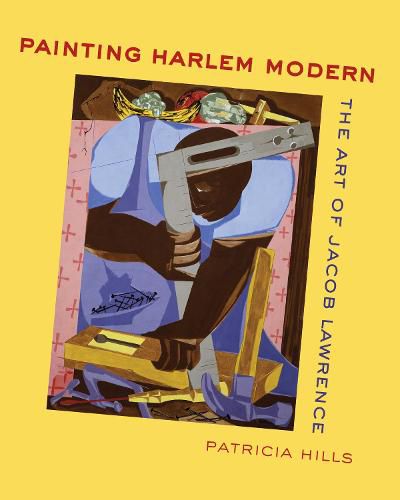Readings Newsletter
Become a Readings Member to make your shopping experience even easier.
Sign in or sign up for free!
You’re not far away from qualifying for FREE standard shipping within Australia
You’ve qualified for FREE standard shipping within Australia
The cart is loading…






Jacob Lawrence was one of the best-known African American artists of the twentieth century. In Painting Harlem Modern, Patricia Hills renders a vivid assessment of Lawrence’s long and productive career. She argues that his complex, cubist-based paintings developed out of a vital connection with a modern Harlem that was filled with artists, writers, musicians, and social activists. She also uniquely positions Lawrence alongside such important African American writers as Langston Hughes, Richard Wright, and Ralph Ellison. Drawing from a wide range of archival materials and interviews with artists, Hills interprets Lawrence’s art as distilled from a life of struggle and perseverance. She brings insightful analysis to his work, beginning with the 1930s street scenes that provided Harlem with its pictorial image, and follows each decade of Lawrence’s work, with accounts that include his impressions of Southern Jim Crow segregation and a groundbreaking discussion of Lawrence’s symbolic use of masks and masking during the 1950s Cold War era. Painting Harlem Modern is an absorbing book that highlights Lawrence’s heroic efforts to meet his many challenges while remaining true to his humanist values and artistic vision.
$9.00 standard shipping within Australia
FREE standard shipping within Australia for orders over $100.00
Express & International shipping calculated at checkout
Jacob Lawrence was one of the best-known African American artists of the twentieth century. In Painting Harlem Modern, Patricia Hills renders a vivid assessment of Lawrence’s long and productive career. She argues that his complex, cubist-based paintings developed out of a vital connection with a modern Harlem that was filled with artists, writers, musicians, and social activists. She also uniquely positions Lawrence alongside such important African American writers as Langston Hughes, Richard Wright, and Ralph Ellison. Drawing from a wide range of archival materials and interviews with artists, Hills interprets Lawrence’s art as distilled from a life of struggle and perseverance. She brings insightful analysis to his work, beginning with the 1930s street scenes that provided Harlem with its pictorial image, and follows each decade of Lawrence’s work, with accounts that include his impressions of Southern Jim Crow segregation and a groundbreaking discussion of Lawrence’s symbolic use of masks and masking during the 1950s Cold War era. Painting Harlem Modern is an absorbing book that highlights Lawrence’s heroic efforts to meet his many challenges while remaining true to his humanist values and artistic vision.